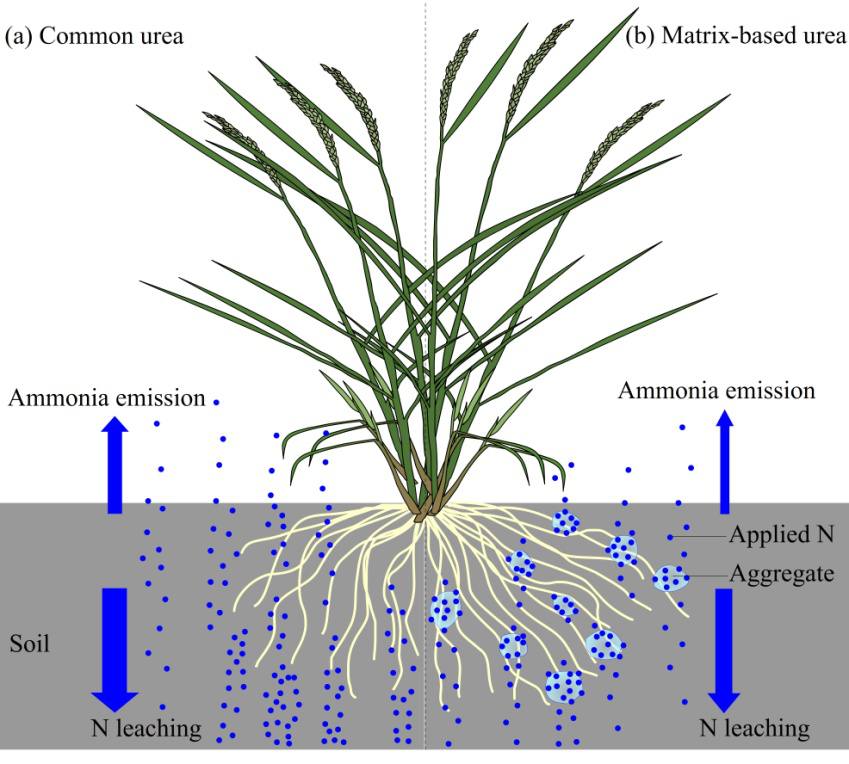
Scientists investigated the effects of matrix-based urea on productivity and profitability in rice production.This study was conducted by WU Yuejin's team in Institute of Technical Biology and Agriculture Engineering, Hefei Institutes of Physical Science and was published in the journal Nutrient Cycling in Agroecosystems.
Food security in China largely depends on rice production since rice is one of the most important cereal crops. Actually, N and water are in high demand for rice production. However, N applied in paddy fields tends to lose via N leaching and NH3 emission due to irrigation and high temperature. How to reduce N loss and improve N use efficiency in paddy fields has become a great concern.
More recently, WU's team reported a matrix-based urea which is suitable for field rice production.
Compared with common urea (CU) treatment, N leaching and NH3 emission in the matrix-based urea (MU) treatment were reduced by 27.5% and 30.4%, respectively.
Hence, the available N concentrations in top soil layers were 6.0-16.1% greater in MU than in CU treatment.
With greater soil N availability, agronomical N efficiency was 31.0%-36.2% greater in MU than in CU treatment.
Finally, application of MU increased rice yield by 10.5-12.6% and net profits by > 1600 yuan/ha. The current study sees the broad prospect of MU in field rice production.
The work was supported by the National Natural Science Foundation of China, the National Key R&D Program of China, and the Science and Technology Service Network Initiative of Chinese Academy of Sciences.

Matrix materials added in matrix-based urea favor the formation of aggregates in soil layers, which are beneficial for reducing N leaching and ammonia emission in paddy fields. (Image by YANG Yang)

86-10-68597521 (day)
86-10-68597289 (night)

52 Sanlihe Rd., Xicheng District,
Beijing, China (100864)

